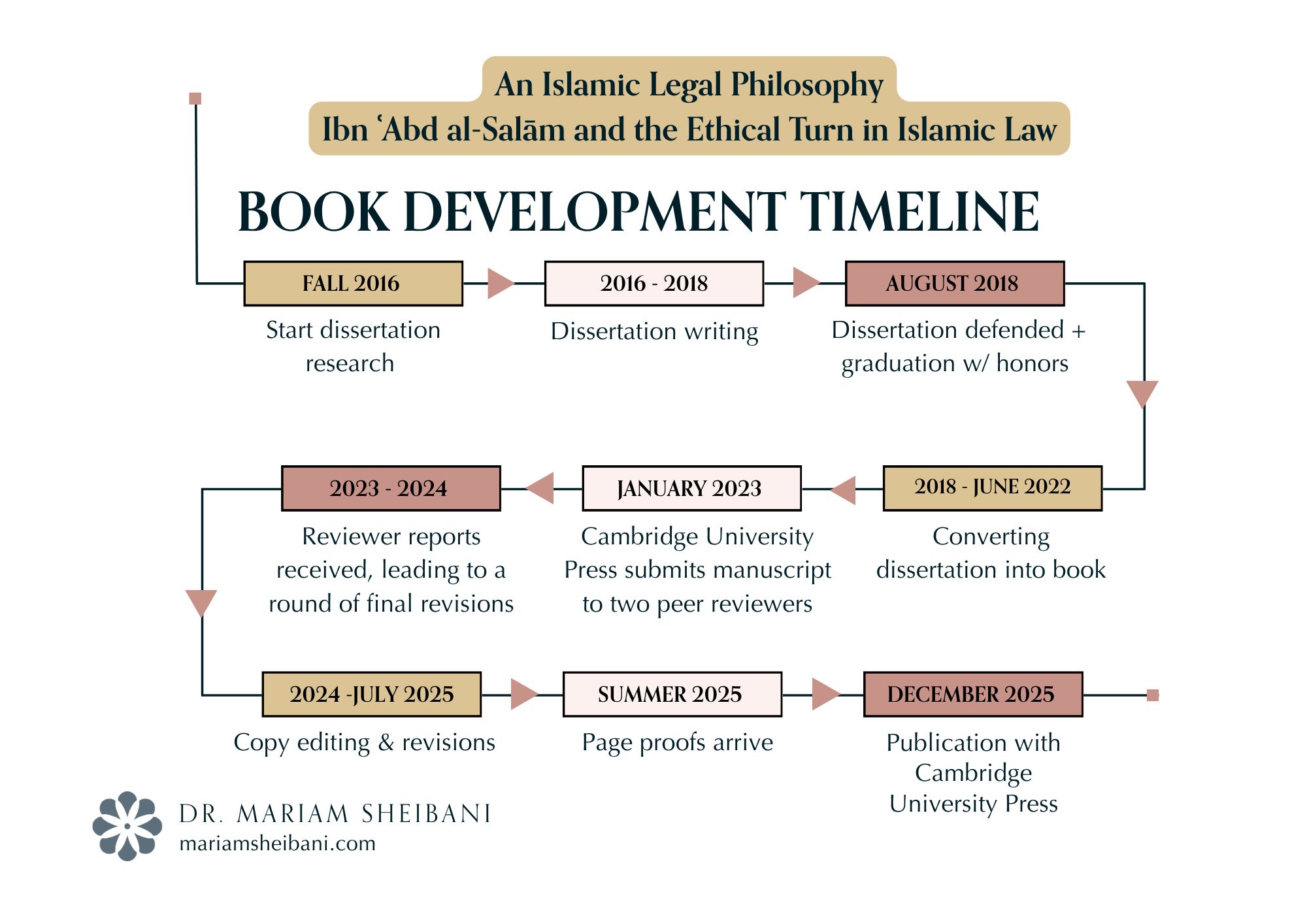From Dissertation to Book: Reflections on a Decade of Research
Since 2015, I have been on a journey of research, learning, revision, and growth, and this December, I am humbled to share that my first academic book will be published by Cambridge University Press. Sitting with the proofs this summer, seeing the book as it will appear in print, was an experience of gratitude, humility, and deep responsibility.
The book began as a doctoral dissertation. After three years of focused research, in August 2018 I had completed a dissertation that was well structured and full of source material, historical context, and analysis of my early interpretations that helped me understand the ethical turn in medieval Islamic legal reasoning and the role of the Shāfiʿī jurist, ʿIzz al-Dīn Ibn ʿAbd al-Salām (d. 660/1262) in the development of Islamic legal philosophy.
But the transition from dissertation to book required something that would stand on its own, contribute to the field, and reflect the perspective of a more seasoned scholar. This wasn’t just about polishing chapters, but returning to the material I first encountered as a student, rethinking its meanings, exploring new sources, writing additional chapters, and restructuring all the material into a book.
Timeline of writing the book - from dissertation to published
Working with Cambridge University Press meant navigating many stages. After sending them my initial book proposal, I spent two years as a postdoc primarily rewriting the book, alongside publishing a few articles related to the research in the book. Once complete, the full manuscript went through peer review by two anonymous reviewers in my field, who critiqued, advised and offered feedback. My revisions had to respond to these reviews, either by integrating their suggestions or explaining why I made different choices.
Once accepted, the book moved through multiple rounds of revisions, copy-editing, indexing, and formatting. Each stage was separated by long stretches, sometimes six to nine months long, when the manuscript was out of my hands, only to make its way back to my desk for another round of refinement. Every time the manuscript made its way back to me, it felt like reacquainting myself with an old friend.
Looking at the proofs this summer after months of distance was a reminder of why this study matters: what it contributes to scholarship on Islamic thought, and what it might mean for broader conversations about Islamic law today.
Final printed book proofs
This research at its core, explores the purposiveness and rationality of the law through the thought of the Ibn ʿAbd al-Salām, who diverged from the dominant formalism of legal practices of his contemporaries in the medieval period, by connecting law with ethics and its everyday applications. He asked and offered compelling questions to deep questions such as: What is the purpose of the law? How does it serve human well-being? And how can it be used for social reform?
Ibn ʿAbd al-Salām’s answers to these questions have deeply shaped how I now approach teaching about Islamic law in my university classroom and the wider Muslim community. The insights of this study continue to inform the Islamic Law Literacy Initiative I am currently developing, which is dedicated to communicating a deep understanding of the ways the law’s purpose, its social goals, and its capacity for adaptation matter in our time. This understanding is essential to making the complexity and dynamism of the law accessible, alive, and relevant.
As the book prepares to enter the world, I am struck by the way research, writing, and teaching are constantly in dialogue. Scholarship is never only about producing a finished text, it is about shaping how we think, what questions we ask, and how we relate to tradition and change, while engaging with communities beyond the academy.
I look forward to the conversations this book will spark, both within the field of Islamic legal studies and far beyond it.


